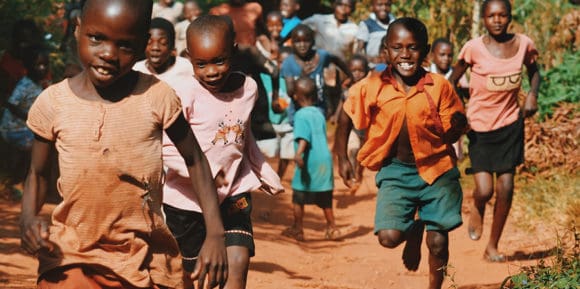By Luiza Toledo, IIASA Science Communication Fellow 2019
2019 YSSP participant Rory Gibb discusses his work at IIASA developing models to understand the effects of future land use, climate, and socioeconomic change on disease risk, focusing on Lassa fever in West Africa as a case study.

© Seth Doyle | Unsplash
Climate change is a fact and one of the most important environmental changes that populations will face in the coming decades. Changes in areas such as agriculture, energy, economics, and biodiversity, together with other natural and human-made health stressors, influence human health and disease in numerous ways. This is evident in the fact that the emergence and spread of many infectious diseases is on the rise, many of them transmitted from wildlife to humans – a trend that has been associated with the environmental changes we are currently experiencing. Warmer average temperatures can mean longer warm seasons, earlier spring seasons, shorter and milder winters, and hotter summers, during which the prevailing conditions may affect the population cycles of hosts, vectors (such as mosquitoes and ticks) and pathogens, thus increasing the incidence of certain vector-borne or zoonotic diseases. Changes to land use, such as expansion of agriculture, can impact ecological communities and bring people into greater contact with wildlife, again potentially facilitating the spread of pathogens.
Rory Gibb, a 2019 Young Scientists Summer Program (YSSP) participant, is doing research to understand how global environmental changes – and in particular interactions between land use and climate change – affect zoonotic (animal-borne) infectious diseases. He applied for the YSSP this summer because of the institute’s research portfolio in different dimensions of human wellbeing, including poverty and inequality, food security, and water resilience. He hopes to contribute a dimension about infectious diseases.

©Liebentritt_Christoph | IIASA
Gibb is interested in understanding how the same kind of environmental pressures that affect biodiversity and ecosystems, such as agricultural expansion, intensification and urbanization, may also impact human health. He points out that even though many infectious diseases are widely studied, such as dengue fever and malaria, we still have a patchy understanding of the environmental factors driving many more neglected or recently emerging diseases – as is the case with Lassa fever, which occurs only in West Africa.
Lassa fever is an acute viral hemorrhagic illness recognized by global health institutions as an important rodent-borne disease, however, many important aspects of the disease’s ecology, epidemiology, and distribution remain poorly understood.
“We know that the spread of Lassa fever is very dependent on the environment, so it is sensitive to climate change, land use change, and other ecological changes, but we don’t have a very clear understanding of where it occurs and how many people are being affected every year,” Gibb explains.
Gibb aims to use current knowledge of the local ecological processes that drive the disease, including spatial modeling to determine the extent of the disease’s rodent reservoir host and its interactions with people, to develop a better understanding of the number of people infected with Lassa fever in West Africa. His YSSP project is focused on understanding how sensitive current patterns of disease risk may be to plausible future agricultural, climatic, and economic change in the region. To do this, he is projecting disease risk over large geographical areas using remotely sensed data on climate and landscape factors, and evaluating the effects of future socio-environmental scenarios on the predicted incidence of human disease. Ultimately, he is interested in how to develop better models to understand the relationship between environmental change and diseases caused by bacteria, viruses, and parasites that spread between humans and animals. He hopes that his research outcomes can help to guide disease surveillance efforts for policymakers.
“The spatial modeling work that I am doing will hopefully be useful in terms of giving some insight into regions of West Africa that are predicted to have a very high risk for Lassa fever, both now and under expected environmental changes, to assist in targeting public health interventions such as improving diagnostic test access. We can also identify important knowledge gaps, such as areas that are highly environmentally suitable for Lassa transmission, but in which the disease is apparently absent – these may be useful locations for intensified surveillance, or for showing that there are other ecological or epidemiological processes occurring that we are not accounting for.”
The impacts that environmental changes have on our health remind us how dependent we are on nature and how our own health depends on that of the environment. Environmental and human health cannot and should not be seen as two separate things.
“I want to do work that highlights the importance of understanding human dependence on nature and the necessity of understanding how we can preserve the health of both ecosystems and people,” Gibb concludes.
Note: This article gives the views of the author, and not the position of the Nexus blog, nor of the International Institute for Applied Systems Analysis.

You must be logged in to post a comment.